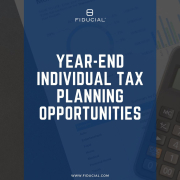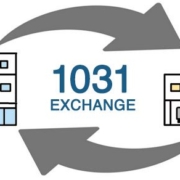HAVING A LOW TAXABLE INCOME YEAR? WAYS TO TAKE ADVANTAGE OF IT
Article Highlights:
- Taxable Income
- Graduated Individual Tax Rates
- Take IRA Distributions
- Defer Deductions
- Convert Traditional IRA Funds into a Roth IRA
- Zero Capital Gains Rate
- Business Expenses
Being unemployed, having had an accident that’s kept you from earning income, incurring a net operating loss (NOL) from a business, having an NOL carryover from a prior year, suffering a casualty loss or other incidents that result in abnormally low taxable income for the year can actually give rise to some interesting tax planning strategies.
But, before we consider actual strategies, let’s look at key elements that govern tax rates and taxable income.
Taxable Income – First, of all, to be simplistic, taxable income is your adjusted gross income (AGI) less the sum of your personal exemptions and the greater of the standard deduction for your filing status or your itemized deductions:
Exemptions
Deductions
Taxable Income XXXX
If the exemptions and deductions exceed the AGI, you can end up with a negative taxable income, which means to the extent it is negative you can actually add income or reduce deductions without incurring any tax.
Graduated Individual Tax Rates – Ordinary individual tax rates are graduated. So as the taxable income increases, so do the tax rates. Thus, the lower your taxable income, the lower your tax rate will be. Individual ordinary tax rates range from 10% to as high 39.6%. The taxable income amounts for 10% to 25% tax rates are:
| Filing Status (2016) | Single | Married Filing Jointly | Head of Household | Married Filing Separate |
| 10% | 9,275 | 18,550 | 13,250 | 9,275 |
| 15% | 37,650 | 75,300 | 50,400 | 37,650 |
| 25% | 91,150 | 151,900 | 130,150 | 75,950 |
So for instance if you are single, your first $9,275 of taxable income is taxed at 10%. The next $28,375 ($37,650 – $9,275) is taxed at 15% and the next $53,500 ($91,150 – $37,650) is taxed at 25%. Here are some strategies you can employ for your tax benefit. However, these strategies may be interdependent on one another and your particular tax circumstances.
Take IRA Distributions – Depending upon your projected taxable income, you might consider taking an IRA distribution to add income for the year. For instance, if the projected taxable income is negative, you can actually take a withdrawal of up to the negative amount without incurring any tax. Even if projected taxable income is not negative and your normal taxable income would put you in the 25% or higher bracket, you might want to take out just enough to be taxed at the 10% or even the 15% tax rates. Of course, those are retirement dollars; consider moving them into a regular financial account set aside for your retirement. Also be aware that distributions before age 59½ are subject to a 10% early withdrawal penalty.
Defer Deductions – When you itemize your deductions, you may claim only the deductions you actually pay during the tax year (the calendar year for most folks). If your projected taxable income is going to be negative and you are planning on itemizing your deductions, you might consider putting off some of those year-end deductible payments until after the first of the year and preserving the deductions for next year. Such payments might include house of worship tithing, year-end charitable giving, tax payments (but not those incurring late payment penalties), estimated state income tax payments, medical expenses, etc.
Convert Traditional IRA Funds into a Roth IRA – To the extent of the negative taxable income or even just the lower tax rates, you may wish to consider converting some or all of your traditional IRA into a Roth IRA. The lower income results in a lower tax rate, which provides you with an opportunity to convert to a Roth IRA at a lower tax amount.
Zero Capital Gains Rate – There is a zero long-term capital gains rate for those taxpayers whose regular tax brackets are 15% or less (see table above). This may allow you to sell some appreciated securities that you have owned for more than a year and pay no or very little tax on the gain.
Business Expenses – The tax code has some very liberal provisions that allow a business to currently expense, rather than capitalize and slowly depreciate, the purchase cost of certain property. In a low-income year it may be appropriate to capitalize rather than expense these current year purchases and preserve the depreciation deduction for higher income years. This is especially true where there is a negative taxable income in the current year.
If you have obtained your medical insurance through a government marketplace, employing any of the strategies mentioned could impact the amount of your allowable premium tax credit.
If you would like to discuss how these strategies might provide you tax benefit based upon your particular tax circumstances or would like to schedule a tax planning appointment, please give the office a call.








Leave a Reply
Want to join the discussion?Feel free to contribute!